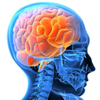- Introduction to brain health and exercise
- The neurological effects of exercise
- Exercise and the hippocampus
- Exercise and self-esteem
- Exercise and cognition
- Exercise and depression
- Exercise in children and adolescents
Introduction to brain health and exercise

Physical activity or exercise is defined as any physical movement induced from skeletal muscle activity that results in energy expenditure and is often described as a cheaper non-drug treatment alternative, or exercise therapy, for many medical conditions as the benefits of exercise are widespread throughout the body system.
People who initiate and maintain a strict exercise regime report increased fitness, mood and overall quality of life. However, it is getting to this stage that is a hurdle. Psychological disturbances are often accompanied by low enthusiasm, self-esteem and motivation which all impact on an individual’s determination and ability to start up and maintain a healthy exercise regime.
The neurological effects of exercise
Brain imaging and post mortem brain studies have identified significant changes in the brains of people that exercise regularly compared to those that do not. Many of these neurological changes are thought to be responsible for the positive psychological benefits associated with exercise. The major neurological findings are:
- Stimulation of brain monoamine;
- Stimulation of neurotrophins;
- Neurogenesis in the hippocampus;
- Decrease in brain atrophy;
- Increased brain plasticity;
- Increased blood flow throughout the brain;
- Reduced inflammation; and
- Increased availability and production of neurotransmitters.
Further evidence from animal studies have also suggested that physical activity improves neuronal survival. This means that, in some cases, if the brain is exposed to any trauma or injury it will be less likely to be permanently damaged.
Exercise and the hippocampus

Exercise and self-esteem
Self-esteem or self-worth is a very important aspect of psychological health. A person’s self-esteem is the confidence they have in themselves and has been suggested to have separate athletic, scholastic, social, behavioural and physical components. Many people may only feel confident in one of the components and as such do not fully realise self-worth. Increasing self-esteem plays a major role in improving psychological profile.
Exercise can improve the athletic component of self-esteem which is thought to embody athletic competence, fitness, strength and attractiveness. Furthermore, the skills developed as a result of engaging in regular physical activity can improve confidence.
Physical activity can also have a positive impact on social self-esteem. Playing in a team sport or even simply receiving acknowledgement from familiar walkers exercising at the same time each day will increase feelings of acceptance and group belonging.
Exercise and cognition

Exercise and depression
Exercise has long been associated with improvements in depressive disorders and has been indicated as a treatment when performed regularly at moderate intensity.
The relationship between exercise and depression is complex and as yet the mechanism underlying the therapeutic effects has not been established. Exercise has been shown to improve depressive symptoms and a lack of exercise has been shown to increase depression. Additionally, individuals that adopt a physically active lifestyle are less likely to develop depressive symptoms. A vicious cycle effect may exist between the two where an initial lack of physical activity can promote feelings of laziness, guilt and unattractiveness which can predispose a person to become more depressed which in turn affects motivation to begin an exercise program and so on and so forth. Exercise may be a way to break this cycle.
Exercise in children and adolescents

The amount of time spent exercising as well as the intensity of the exercise has been shown to significantly correlate with the psychological profiles of children aged 8-10. Although further research needs to be carried out in order to generalise this finding over a wider age group the preliminary results suggests that children that undertake at least 4 hours of light to moderate activity per day had more positive outlooks then those that participated in less than 4 hours. Playing catch is an example of a light exercise and walking is considered moderate exercise. Furthermore, if 30 mins of this light exercise was replaced with more vigorous activity the children’s moods improved even further.
More information
 |
For more information on fitness and exercise, including stretches, types of exercise, exercise recovery and exercise with health conditions, as well as some useful videos, see Fitness. |
 |
For more information on brain health, including nutrition and mental activity, see Brain Health. |
References
- Suija K, Pechter U, Kalda R, Tahepold H, Maaroos J, Maroos HI. Physical activity of depressed patients and their motivation to exercise: Nordic Walking in family practice. Int J Rehab Res. 2009; 32: 132-8.
- Scarmeas N, Luchsinger JA, Scupf N et al. Physical Activity, Diet, and Risk of Alzheimer Disease. JAMA. 2009; 302(6): 627-7.
- Parfitt G, Pavey T, Rowlands AV. Children’s physical activity and psychological health: the relevance of intensity. Acta Paediatrica. 2009; 88: 1037 – 43.
- Thorsen L, Nystad W, Stigum H, et al. The association between self-reported physical activity and prevalence of depression and anxiety disorder in long-term survivors of testicular cancer and men in a general population sample. Supportive Care in Cancer. 2005; 13(8): 637-46.
- Sarbadhikari SN, Saha AK. Moderate exercise and chronic stress produce counteractive effects on different areas of the brain by acting through various neurotransmitter receptor subtypes: A hypothesis. Theoretical Biology and Medical Modelling. 2006; 33(3); 1-18.
- Griesbach GS, Hovda DA, Gomez-Pinilla F. Exercise-induced improvement in cognitive performance after traumatic brain injury in rats is dependent on BDNF activation. Brain Research. 2009: 1288: 105-15.
- van Praag H. Exercise and the brain: something to chew on. Trends in Neurosciences. 2009; 32(5):283-90.
- Skapinakis P, Lewis G, Mavreas V. Temporal Relations Between Unexplained Fatigue and Depression: Longitudinal Data From an International Study in Primary Care. Psychosomatic Medicine. 2004; 66: 330-5.
All content and media on the HealthEngine Blog is created and published online for informational purposes only. It is not intended to be a substitute for professional medical advice and should not be relied on as health or personal advice. Always seek the guidance of your doctor or other qualified health professional with any questions you may have regarding your health or a medical condition. Never disregard the advice of a medical professional, or delay in seeking it because of something you have read on this Website. If you think you may have a medical emergency, call your doctor, go to the nearest hospital emergency department, or call the emergency services immediately.







